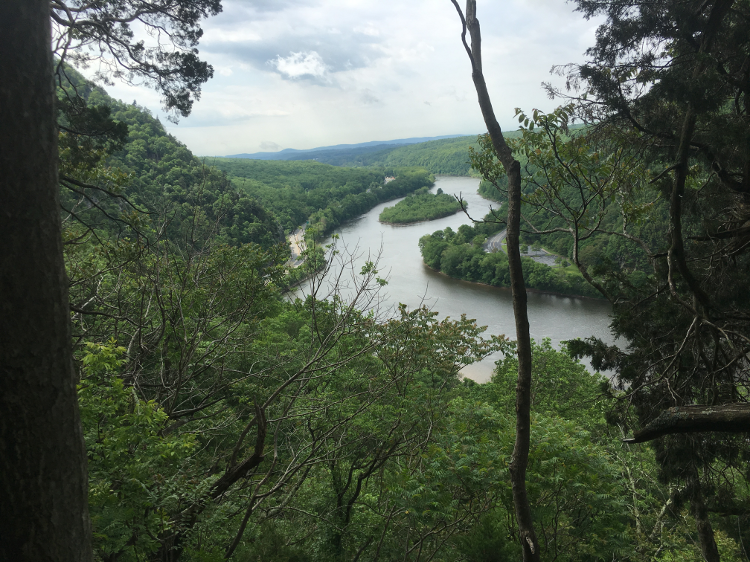NJDOT Route 80 Rockfall Mitigation
Project Description
The existing rock cut areas along the westbound lanes of I-80, within Hardwick and Knowlton Townships in Warren County, NJ, have large overhangs, loose boulders, open fissures, etc., which present a major rockfall hazard. Several rockfall events in this area have already resulted in motor vehicle crashes. This segment of I-80 is rated as the #1 rockfall hazard location in the state of New Jersey within NJDOT's Rockfall Hazard Management System. As a result, this segment of I-80 requires rockfall mitigation, which is typically performed with heavy construction equipment that produces high noise levels and generates ground-borne vibrations.
Noise analyses were performed to address the potential for temporary changes to the natural soundscape and impacts to park users within Worthington State Forest and the Delaware Water Gap National Recreation Area (DWGNRA) in New Jersey, as well as directly across the Delaware River at the Point of Gap Overlook in Pennsylvania. In addition, peak air blast levels and ground-borne vibration levels from explosive blasting were evaluated at the Worthington State Forest Park Ranger's station to verify compliance with regulations established in the New Jersey Administrative Code (N.J.A.C.).
Background noise monitoring was performed in four locations, including viewpoints and overlooks along park trails as well as within the boat launch area of the park. Vibration monitoring was performed in two locations, solely to characterize the existing vibration environment in the vicinity of potential endangered timber rattlesnake and northern copperhead den locations. However, as requested by the New Jersey Department of Environmental Protection (NJDEP), explosive blasting would be restricted to only occur during the period from May 15 to September 15 in an effort to avoid and/or minimize impacts to snakes before they begin hibernation.
Due to the complex topography that exists between the proposed rockfall mitigation limits and recreational areas, SoundPLAN ™ noise modeling software was utilized to perform the construction noise assessment. Construction-related noise levels were predicted at each background noise monitoring location, and sound level contours were developed for visualization of predicted construction noise levels throughout Worthington State Forest/DWGNRA in New Jersey and the DWGNRA in Pennsylvania. All construction activities were evaluated for impact potential based on an increase of 10 dB or more over background noise levels, except explosive blasting, which was evaluated for impact potential to park users based on the acoustic startle reflex in humans. Air overpressure from explosive blasting was evaluated at the Park Ranger's station and compared to N.J.A.C 12:190-7.25. The vibration assessment was performed using Oriard's formula for predicting blast vibrations, and the potential for vibration-induced structural damage to the Park Ranger's station was evaluated pursuant to applicable limits within N.J.A.C 12:190-7.26.
The construction noise and vibration assessments were summarized within a Technical Environmental Study (TES) document as well as within the NEPA Environmental Assessment (EA). Measures to reduce construction-related noise impacts were recommended for inclusion within contract documents as special provisions to the specifications and summarized within the EA.
